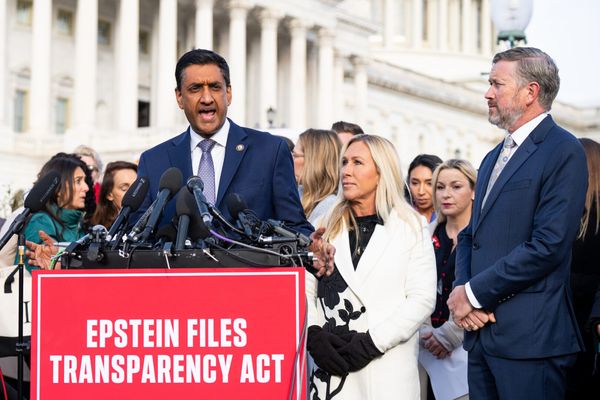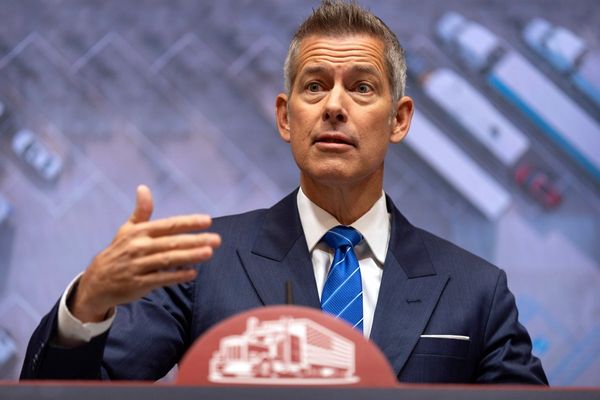
The United States' negative net international investment position (NIIP) might be too deep for the current administration. While Donald Trump‘s protectionist measures promise a revival of domestic industry, structural imbalances in savings, investment, and global capital flows suggest tariffs cannot resolve America's persistent deficits.
Washington can slap tariffs on anything that moves, but the truth is blunt: you can't regulate your way out of a structural addiction to foreign capital.
Why Is Net International Investment Significant?
The U.S. net international investment position (NIIP) is the nation's global balance sheet. It's the gap between what Americans own abroad and what foreigners own in the U.S. And the math is ugly.
At the end of Q1 2025, U.S. assets overseas stood at $36.85 trillion. Liabilities? $61.47 trillion.
That leaves America with a $24.61 trillion hole. Yes, that's an improvement from late 2024's –$26.54 trillion, but it's still one of the biggest debtor positions in modern history.
Why does this matter? Because it's a mirror of how the U.S. economy runs: Americans spend more than they save, and foreign capital fills the gap. It works as long as the world is happy to bankroll America's lifestyle. But when confidence wobbles, that debt becomes a vulnerability — interest costs climb, the dollar shakes (as evident this year), and the U.S. suddenly looks less like a safe haven and more like a risky bet.
The Big Borrower
Brad Setser, a former staff economist of the US Department of the Treasury and a fellow at the Council on Foreign Relations, has a clear message: stop calling America the world's banker. The U.S. doesn't borrow cheaply to invest smartly abroad. It just borrows — and borrows big.
The debt flowing into America doesn't fund some master plan of U.S. global investment. It covers the country's own external deficit. Equity inflows and outflows roughly cancel. The "banker" myth collapses when you realize the U.S. isn't lending; it's living on credit.
So what role does the U.S. play?
Setser sees it as the supplier of safe returns to everyone else. Global investors crave Treasuries and dollar-denominated assets not because they're cheap, but because they're stable. Meanwhile, excess profits from American foreign investment mostly come from clever tax accounting in offshore havens, not from being a brilliant global financier.
Setser skewers the IMF for sugarcoating this reality. The Fund's models underplay just how deep America's net debtor status runs, and they keep "forecasting away" global imbalances that keep coming back bigger. The cold truth: the U.S. isn't the world's bank. It's the world's biggest borrower, and that title comes with limits — on policy, on growth, and economic sovereignty.
Can Tariffs Make America Great Again?
According to researchers from the University of Urbino Carlo Bo, that's unlikely. In a paper titled "The Trade Deficit Delusion," Alessandro Bellocchi and Giuseppe Travaglini argue the deficit isn't about "unfair" trade tricks abroad. It's about what happens at home — a country that saves too little, consumes too much, and invests more than it earns.
Private consumption hit 68% of GDP in 2024 — households are spending 95% of personal income, nearly everything they make. Government consumption? A paltry 13% of GDP, with deficits still dragging national savings down. Household savings have shriveled. Investment, meanwhile, is high, fueling growth but also sucking in imports.
That's the structure behind the trade deficit: a significant gap in goods (–4.2% of GDP) that only gets partially patched by a surplus in services (+1%). Foreign capital keeps the system afloat, but that means America has to run trade deficits to keep the dollars flowing.
The authors lay out three insights:
- Imports won't fall unless capital flows change. You can slap tariffs on everything, but as long as foreign investors keep funding America, the import machine won't stop.
- A surplus means higher savings or lower investment. Tariffs don't touch either. In fact, Trump-era policies, which are tax cuts plus more domestic investment, make the gap worse, not better.
- Twin surpluses are a fantasy. You can't shrink both the budget deficit and the trade deficit without either Americans suddenly saving big or investment collapsing. Neither is remotely likely.
Thus, tariffs might be an "impossible theorem." They shift trade flows around, jack up consumer prices, spark retaliation abroad, but they don't solve the saving–investment gap that drives America's external debt.
Read Next:
Photo: Shutterstock







